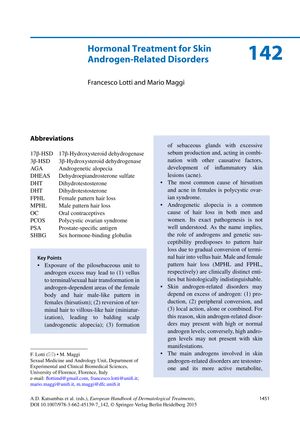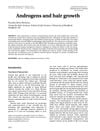Hormonal Treatment for Skin Androgen-Related Disorders
January 2015

TLDR Hormonal treatments can help with hair loss, acne, and excess hair growth, but it takes 3-6 months to see results and patients should know the possible side effects.
The 2015 document reviews hormonal treatments for skin androgen-related disorders, particularly focusing on hirsutism, acne, and androgenetic alopecia (AGA), which encompasses male pattern hair loss (MPHL) and female pattern hair loss (FPHL). It explains that these conditions may be due to excess androgen production or action, with testosterone and dihydrotestosterone (DHT) being the main androgens involved. Treatments include oral contraceptives (OCs) with antiandrogenic activity and antiandrogens such as spironolactone, cyproterone acetate, flutamide, and finasteride. Spironolactone and cyproterone acetate are commonly used for FPHL, while finasteride and dutasteride are used for MPHL. The document notes that hormonal therapy results should be expected after 3-6 months and that antiandrogens have varying efficacy for hirsutism and acne, with flutamide being the most effective. It also mentions that dutasteride, not FDA-approved in the United States for MPHL, has shown efficacy in preventing hair loss progression but has potential adverse effects. The importance of patient awareness regarding the indications and side effects of these treatments is emphasized.







